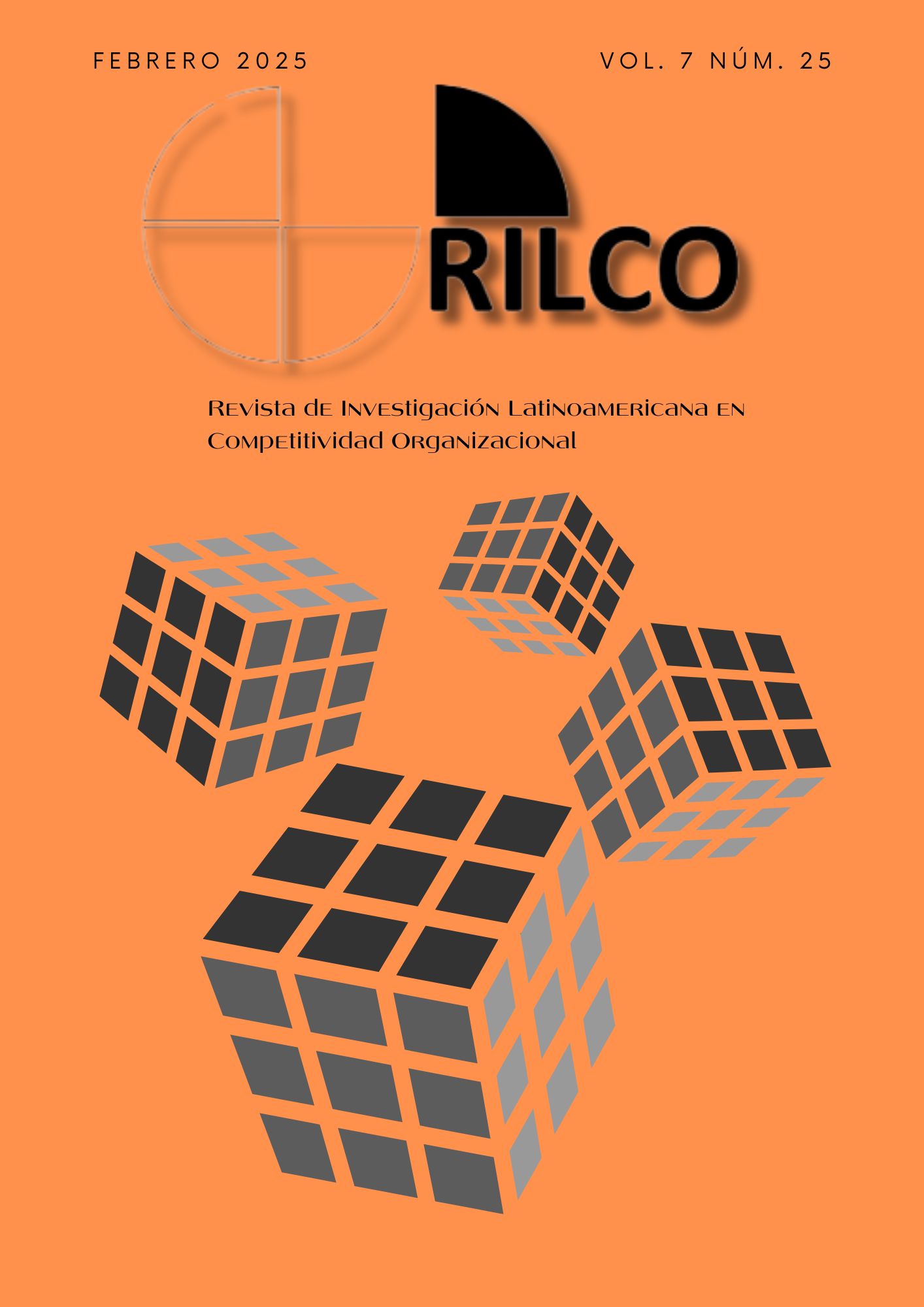Preferencias recreativas de los jóvenes en sus tiempos libres
DOI:
https://doi.org/10.51896/rilco.v7i25.778Palabras clave:
preferencias, actividades recreativas, jóvenesResumen
El objetivo principal de este artículo, es determinar las preferencias sobre las actividades recreativas de los jóvenes en sus tiempos libres en la ciudad de Menongue, dada la proyección estratégica de este municipio, de ampliar las ofertas en esta área clave de la gestión turística. El estudio incluyó 385 jóvenes de los barrios más céntricos de la ciudad. Se aplicó una entrevista estructurada compuestas por tres variables demográficas y cuatro variables del bloque temático: las preferencias, las posibilidades, los establecimientos y las limitaciones. El trabajo de campo para recopilar la información fue llevado a cabo por estudiantes de segundo año de la carrera de gestión turística de la Universidade Cuito Cuanavale. La información resultante del trabajo de campo fue codificada, tabulada y luego procesada en el software IMB SPSS Statistic 29.0.2.0, e incluyó el análisis de frecuencias, la tabulación cruzada y el análisis chi cuadrado. Como principales resultados se obtiene una orientación focalizada en cuatro grupos esenciales de preferencia recreativas: las deportivas, las culturales, las de aprendizaje y las de entretenimiento y aventuras. Predomina una amplia diversidad de actividades dentro de cada grupo de preferencias, con una reducida posibilidad de realizarlas en la localidad, por la falta de establecimientos, condiciones y personal preparado que las imparta, fundamentalmente para las relacionadas con las manifestaciones culturales y de aprendizaje, identificándose como una oportunidad para ampliar la oferta recreativa de los establecimientos turísticos y emprendedores, aprovechar la concurrencia de jóvenes en los espacios públicos para practicar deportes, juegos y conversar entre amigos.
Citas
Blanco, L. L. (2021). Interacción educación-turismo: el turismo educativo para jóvenes estudiantes en la Ciudad de Buenos Aires. Tesina de Licenciatura en Turismo, Universidad Nacional de San Martín. https://ri.unsam.edu.ar/handle/123456789/1502
EUROINNOVA. (4 de agosto de 2024). Clasificación de las Etapas de la vida por edad. https://www.euroinnova.com/blog/etapas-de-la-vida-por-edades
Figueroa, W. J. P., Rodríguez, X. E. S., Vaca, L. A. P., & Figueroa, F. E. P. (2022). Los escenarios cafetaleros de la zona sur de Manabí y su potencial para desarrollar una oferta de turismo rural. RECIAMUC, 6(4), 144-158. https://reciamuc.com/index.php/RECIAMUC/article/view/1074
Franch, M. (2002). Nada para fazer? Um estudo sobre atividades no tempo livre entre jovens de periferia no Recife. Revista Brasileira de Estudos de População, 19(2), 117-133. https://www.rebep.org.br/revista/article/view/315
Garrido, C. A. (2024). La oferta turística y el rol de la sociedad anfitriona para el desarrollo del turismo LGBT. Caso de estudio: Bahía Blanca. Tesina de Licenciatura en Turismo, Universidad Nacional del Sur. https://repositoriodigital.uns.edu.ar/handle/123456789/6743
Gomes Pereira, R., Souza e Silva, N. S., Mendes Pereira, M., Sant'Ana Haikal, D., de Pinho, L., & Veloso Silva, R. R. (2021). ATIVIDADES NO TEMPO DE LAZER ENTRE ADOLESCENTES ESCOLARES: ESTUDO DE BASE POPULACIONAL. Revista Brasileira de Obesidade, Nutrição e Emagrecimento, 15(92), 63-71. https://www.rbone.com.br/index.php/rbone/article/view/1620
Honores Ortega, J. S., & Cojitambo Arcentales, J. (2022). Actividades turísticas recreativas para la dinamización del flujo de visitantes en el cerro de Cristo, cantón Piñas. Tesina de Licenciatura en Turismo, Universidad Técnica de Machala UTMACH. http://repositorio.utmachala.edu.ec/handle/48000/21244
Instituto Nacional de Estatística [INE] (2017). Projeção da população da província Cuando Cubango 2014-2050. Edição © INE. Luanda, Angola-2016. https://www.ine.gov.ao/Arquivos/arquivosCarregados//Carregados/Publicacao_637586913798584923.pdf
Marcino, L. F., Giacon-Arruda, B. C. C., Teston, E. F., Souza, A. S. D., Marcheti, P. M., Lima, H. D. P., Marcon, S. S., & Aratani, N. (2022). Prática de lazer em adolescentes e fatores associados: implicações para o cuidado. Acta Paulista de Enfermagem, 35, eAPE02041. http://dx.doi.org/10.37689/acta-ape/2022AO02041
Naciones Unidas (2024). Paz, dignidad e igualdad en un planeta sano. Consultado el 4 de agosto de 2024. https://www.un.org/es/global-issues/youth.
Obando Bernal, E. V., & Pulido Hortúa, A. F. (2020). Recreotk Itinerante, Incidencia En Las Necesidades Sociales De Niños Y Jóvenes, Del Barrio Bellavista Del Municipio De Fusagasugà. Tesina de Licenciatura en Educación Física, Universidad de Cundinamarca. http://hdl.handle.net/20.500.12558/2974
Plano Diretor do Turismo de Angola [PDT-A] (2013). Ministério da Hotelaria e Turismo de Angola MINHOTUR: Orgal Lda. Abril de 2013.
Plano Diretor do Turismo para a Província de Cuando [PDT-CC] (2014). Governo Provincial do Cuando Cubango. Apresentado por Francisco Higino Carneiro Governador da Província em janeiro 2014.
Reyes-Vila, W., & Pérez-Martínez, A. (2022). Gustos y Preferencias en la Recreación Cultural de los estudiantes en la comunidad de la Universidad de Oriente: Array. Maestro y Sociedad, 19(1), 278-292. https://orcid.org/0000-0001-5934-122X
Ribeiro, M. I., Moreno, M., & Fernandes, A. (2012). Ocupação dos tempos livres dos jovens com idades entre os 10 e os 18 anos no concelho de Bragança. Revista Egitania Sciencia, 10, 135-159. https://egitaniasciencia.ipg.pt/index.php/revista-egitaniasciencia/article/view/399
Roldán, N. G. (2020). Jóvenes residentes y tiempo libre. Apropiaciones diferenciales en la ciudad de Mar del Plata, Argentina. Realidad, Tendencias y Desafíos en Turismo (CONDET), 18(2), 77-101. http://www.condet.edu.ar/
United nations Conference on trade and development [UNCTAD] (2011). Promover o Turismo sustentável MAPEAMENTO DA SITUAÇÃO DO TURISMO NA REPÚBLICA DE ANGOLA. PROJECTO TRAINFORTRADE/CNUCED – ANGOLA 2011, UNCTAD/DTL/KTCD/2011/1. https://unctad.org/es/system/files/official-document/dtlktcd2011d1_sp.pdf
Publicado
Cómo citar
Número
Sección
Licencia

Esta obra está bajo una licencia internacional Creative Commons Atribución-NoComercial 4.0.
Esta obra está bajo una licencia internacional Creative Commons Atribución-NoComercial 4.0.
Usted es libre de:
- Compartir — copiar y redistribuir el material en cualquier medio o formato
- Adaptar — remezclar, transformar y construir a partir del material
Bajo los siguientes términos:
-
Atribución — Usted debe dar crédito de manera adecuada, brindar un enlace a la licencia, e indicar si se han realizado cambios. Puede hacerlo en cualquier forma razonable, pero no de forma tal que sugiera que usted o su uso tienen el apoyo de la licenciante.
-
NoComercial — Usted no puede hacer uso del material con propósitos comerciales.


